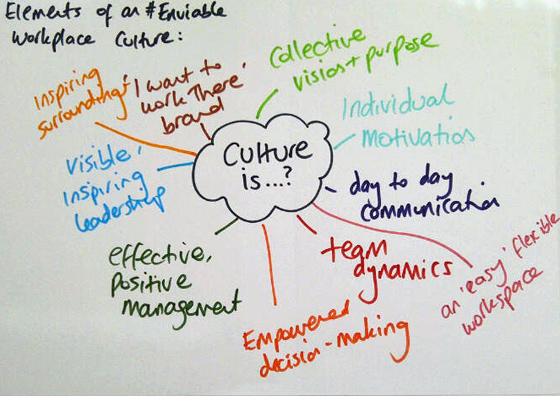By Shannon DiGregorio Abram, Relationship Manager at The Community Roundtable.
After a month-long love fest highlighting our 5th anniversary and the release of the State of Community Management 2014 we are back to business as usual here on TheCR Blog. This month we’re going to take on the idea of culture and community – specifically how community management can impact a company’s culture with a special deep dive on culture findings from the State of Community Management 2014.
Before we jump in, I wanted to share some of my favorite posts about community and culture from around the web. Over at The Community Manager, Emily Castor, Director of Community Relations for Lyft, talks about how incorporating rituals into 1:1 interactions can foster deliberate culture:
“For Lyft this includes the pink mustaches, riders sitting in the front seat, fist bumping and rewarding drivers with shout-outs and recognition within their newsletters, events and online communities. Your community members want to feel like they belong, and rituals give them an identity.”
I love the idea of defining rituals and letting your community run with them. Having the equivalent of a secret handshake or the “Jeep wave” for your members can build both good feelings, loyalty, and brand awareness. Over at GovDelivery, Joseph Porcelli takes this idea and steps back, defining community culture as,
“… the shared set of beliefs, expectations, values, desires and rituals that influence the ways in which individuals, groups and teams will interact with one another and collaborate to achieve common objectives.”
He then shares a fantastic template that his team uses to facilitate this type of thinking. I’ve included a screenshot here, but it’s definitely worth checking out in entirety.
Finally, in an “oldie but goodie” post Sandra Ordonez shares “5 Guidelines for Community Managers to Have Cross-Cultural Fluency” over on pbs.org. These are basic, but important, fundamentals when thinking about defining culture through community:
1. Watch Your Language
Language is understood in conjunction with context and body language — two things that are hard to infer online.
2. The Golden Rule: Tolerance
Any successful diverse community usually ensures that all members feel comfortable to be themselves.
3. Be a Good Mediator
Your community looks to community managers for cues on how to behave.
4. Educate Yourself on Different Views
As someone who is native in two languages, I sometimes have what I call “spanlexia” moments. I’ll say something in English that is grammatically correct, but only makes sense in Spanish.
5. Admit Weakness
Don’t be afraid to ask questions. Honesty and respect are really the only two cornerstones that 99 percent of all communities demand.
There is so much more over on the original post that provides a really nice framework for setting expectations in your community. How do you think about defining and supporting culture in your community and through your community efforts? Do you have a favorite article or blog post you’d like to share? We’d love to hear how you tackle these topics and are excited so share some of our findings over the next month!
—–
Did you know that 95% of TheCR Network members agree that the content and peer input improves the quality of their work? It’s true! Membership in TheCR Network saves community and social business leaders time and improves the quality of their work by connecting them quickly with peers, experts and curated information. Learn how joining TheCR Network can improve the work you do.


